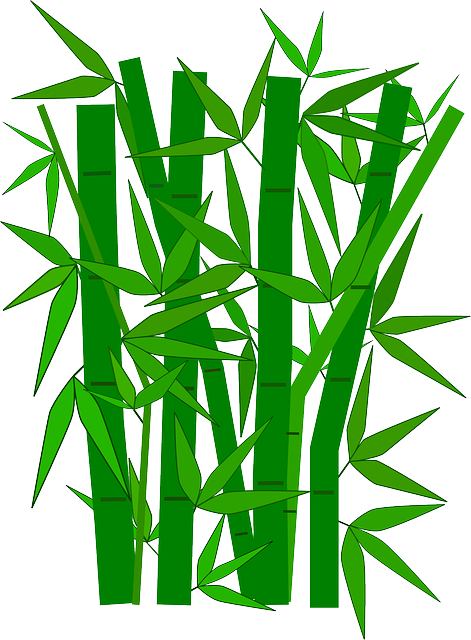Advice for the Home Gardener from the Help Desk of the
UC Master Gardener Program of Contra Costa County

Response from the Help Desk: Thank you for your inquiry to the UC Master Gardener Program Help Desk regarding transplanting a bamboo plant that you suspect may be root bound.
Answering your question gave me the opportunity to do some research on growing bamboos. I have always loved the look of bamboos and personally have been hesitant to grow them for fear of the runners taking over. There are many varieties of bamboo and some are well suited to growing in containers. You do not say whether your potted bamboo is indoors or outside. Generally speaking, bamboos grown in pots do not grow as large as those grown in the ground outdoors. Bamboo grown in containers can become root bound and may suffer from a lack of nutrition. Container bamboos do need to be transplanted about every 3-5 years. Below is some information that I discovered about container bamboo plants:
- An outside growing potted bamboo that is root bound can be divided, but this should be done in the winter during cooler weather so as to avoid damaging or killing the root ball.
- If the plant is root bound and not being divided, it can be transplanted into a larger pot without disturbing the root ball. You will want to plant it in a container that is twice the size of the root ball. This could be a pot about 28 inches wide (based on the dimensions of your current pot size--14" wide by 15" tall). The new pot does not need to be twice as tall (bamboo are shallow rooted) but could be about 18 inches tall. Shorter and squat pots that are weighted in the bottom with rocks are a good idea to prevent the plant from blowing over in a wind. Pots that are not suitable are thin plastic pots (provide poor insulation from cold) or black pots that can absorb a lot of heat in hot sunny areas.
- Container bamboo plants are often grown more successfully outdoors rather than indoors. If grown indoors, they like a sunny southern window exposure and consideration for indoor humidity.
- Varieties of bamboo have various preferences for temperature, cold and sunlight tolerance. If yours is outdoors, you have probably discovered a place that is suitable, as you have not mentioned any problems with your plant.
- Bamboo grows best in soil that is aerated, light in structure and rich in organic nutrients. The soil should allow good drainage and retain moisture but never allow the plant to be waterlogged. During hot and windy summer days, the plant should be watered at least every other day. During the winter, you can wrap the pot with burlap or some other insulating material to protect the roots from freezing or move it indoors or to a protected area. Mulch can be added to retain moisture and also for insulation from the cold.
- Pruning can enhance the growth and appearance of the plant but should be done after the growing season in the fall/winter. Cuts are made above the culm nodes and above branch nodes. Use sharp and clean tools.
- The best fertilizer to use is organic materials that can be applied as a top dressing. They require watering into the soil after application. Fertilizing is done during the shoot growing period beginning in the spring. Bamboo is part of the grass family and it likes nitrogen. However, excessive nitrogen will result in a lot of growth.
- Bamboo can become infected with a bamboo mite. You might suspect this problem if you see light patches on the leaves. Keeping your plant healthy, watered properly and misting the leaves can help to prevent them.
- Here is a link to additional information that I found very helpful: http://www.bamboobotanicals.ca/index.html
I hope you find this information helpful and good luck transplanting your bamboo. Let us know if we can answer any other questions.
Help Desk of the UC Master Gardener Program of Contra Costa County (EKP)
Note: The UC Master Gardeners Program of Contra Costa's Help Desk is available year-round to answer your gardening questions. Except for a few holidays, we're open every week, Monday through Thursday for walk-ins from 9:00 am to Noon at 75 Santa Barbara Road, 2d Floor, Pleasant Hill, CA 94523, although we will be moving tlat July. We will notify you when that occurs. We can also be reached via telephone: (925) 646-6586, email: ccmg@ucanr.edu, or on the web at http://ccmg.ucanr.edu/Ask_Us/ MGCC Blogs can be found at http://ccmg.ucanr.edu/HortCoCo/ You can also subscribe to the Biog (//ucanr.edu/blogs/CCMGBlog/)